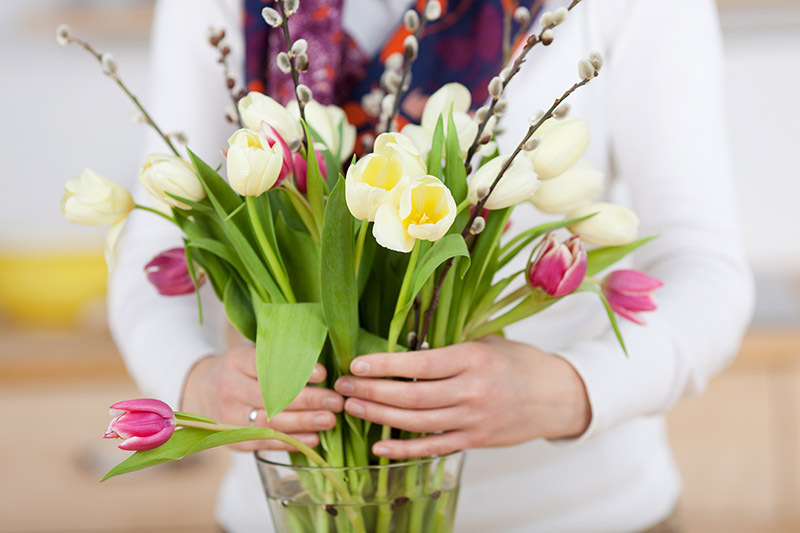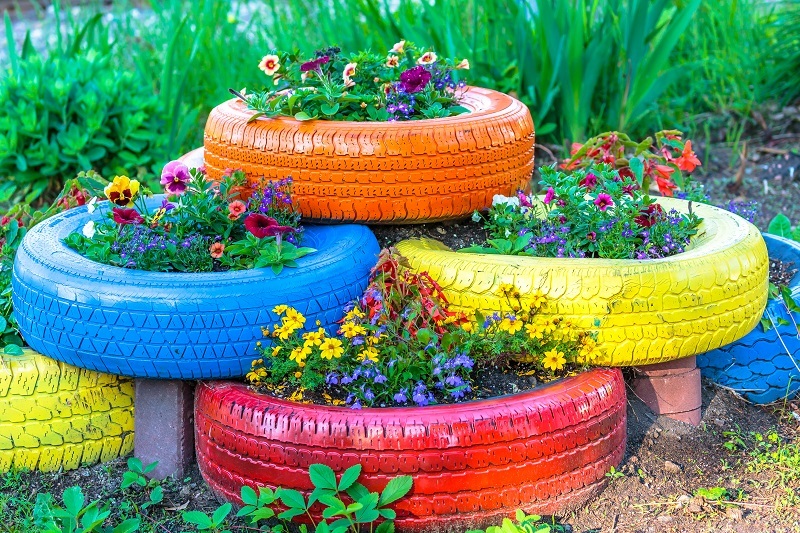Ensure Bright and Lasting Poinsettias
Posted on 01/07/2025
Ensure Bright and Lasting Poinsettias: Comprehensive Care Guide
When the holiday season arrives, vibrant poinsettias often steal the show with their stunning red, white, or pink bracts. These cheerful plants symbolize joy and festivity, yet many people struggle to keep them lively beyond the New Year. In this in-depth guide, you'll discover how to ensure your poinsettias remain bright and long-lasting, making them a cherished feature in your home throughout winter and beyond.

Understanding Poinsettias: A Brief Overview
Poinsettias, scientifically known as Euphorbia pulcherrima, are native to Mexico and Central America. They're renowned for their colorful foliage, which is often mistaken for the flower but is in fact a modified leaf called a bract. The true flowers are the tiny yellow centers, known as cyathia.
- Common Name: Poinsettia
- Botanical Name: Euphorbia pulcherrima
- Native Region: Mexico, Central America
- Bloom Time: Winter
To keep your poinsettias vivid and lasting, understanding their unique needs is essential. Read on for expert tips to maximize the lifespan and vibrancy of these iconic plants.
Choosing Quality Poinsettias for Longevity
Start by selecting healthy, high-quality plants. The lifespan and vibrancy of a poinsettia are significantly influenced by its initial condition.
How to Choose a Healthy Poinsettia
- Look for vibrant bracts: Bright colors indicate freshness and health.
- Inspect the cyathia: The central yellow flowers should be intact and not shedding pollen.
- Check leaves: Healthy plants have lush, deep-green leaves without wilting or yellowing.
- Examine stems: Stems should be sturdy and free of blemishes or rot.
When purchased in peak condition, you're already a step closer to ensuring bright, longer-lasting poinsettias.
Proper Placement: Light, Temperature, and Humidity
Poinsettia Light Requirements
Poinsettias thrive in bright, indirect sunlight. Too little light can cause leaves to drop and colors to fade.
- Place near a sunny window, away from direct afternoon sun.
- Rotate the plant every few days for even growth.
- Avoid locations that are too shady or dark.
Temperature and Humidity Control
Maintaining consistent, ideal temperatures will help poinsettias stay bright longer:
- Optimal range: 65?F to 75?F (18?C to 24?C) during the day; nighttime temperatures above 60?F (15?C).
- Avoid drafts and heat sources: Cold or hot drafts and direct contact with radiators can cause leaf drop.
- Humidity matters: Moderate humidity prevents leaves from drying or curling.
Pro tip: If your home is dry, place a humidifier nearby or set the poinsettia pot over a tray of pebbles and water to increase moisture in the air.
Watering Poinsettias for Prolonged Brightness
How Often to Water Poinsettias
Over or under-watering are frequent causes of lost brightness. To ensure bright and lasting poinsettias, follow these guidelines:
- Check the soil daily; it should remain lightly moist, not soggy.
- Water thoroughly when the top inch of soil feels dry to the touch.
- Drain excess water; never let the plant sit in a saucer with standing water! Remove decorative foil if it traps moisture.
- Reduce watering when blooms fade, but avoid letting the soil dry out completely.
Tip: Feel the weight of the pot - a lightweight pot may indicate thirsty roots.
Fertilizing Your Poinsettia to Extend Brightness
The Role of Fertilizer in Vibrant Poinsettias
While actively blooming, poinsettias generally require minimal fertilizer. However, if you want your plant to thrive and possibly bloom again:
- Start fertilizing after the holidays: Once blooming fades, apply a balanced, all-purpose houseplant fertilizer every 4-6 weeks.
- Follow label instructions: Over-fertilizing can damage the roots and reduce longevity.
Fertilization is especially important if you intend to keep poinsettias for the long term.
Poinsettia Care After the Holidays: Keeping Brightness and Life
Steps to Keep Poinsettias Alive Year-Round
Many discard their poinsettias after the festive season, but with proper attention, your plant can flourish for months--sometimes even bloom again the next year. Here's how to ensure long life for poinsettias:
- Late Winter/Early Spring: In March or April, cut the plant back to 6-8 inches to encourage new growth. Move it to a brightly lit, warm location and water regularly.
- Repotting: In May, transplant your poinsettia to a slightly larger container using fresh potting soil.
- Move outdoors: Once temperatures remain above 60?F, place the plant outdoors in partial shade. This encourages sturdy new growth.
- Pruning: Pinch back stems several times through summer to maintain a bushy shape.
- Bring indoors in early fall: As nights cool, move your poinsettia back inside to a sunny window.
This routine can help you enjoy lush, bright poinsettias for multiple seasons.
How to Trigger Blooming for Next Holiday Season
If you dream of a poinsettia that re-blooms with radiant colors next Christmas, follow these expert steps:
How to Force Poinsettias to Bloom Again
- Dark Treatment: Starting in late September or early October, give your plant at least 14 hours of complete darkness each night. Place it in a closet or cover with a box from 5 p.m. to 7 a.m.
- Daily Sunlight: Move the plant to a sunny window during the day for 6-8 hours.
- Repeat for 8-10 weeks: Consistent darkness and light cycles are crucial for forming new colorful bracts.
- Resume regular care: Once bracts begin to show color, discontinue the dark treatment.
With patience and commitment, you can ensure bright, long-lasting poinsettias year after year.
Common Poinsettia Problems and Solutions
Even with the best care, issues may arise. Understanding and addressing them quickly can ensure your poinsettias remain vibrant.
- Leaf drop: Usually due to sudden changes in temperature, drafts, or overwatering.
- Wilting: Happens if the plant is too dry or rootbound. Check soil moisture and repot if necessary.
- Faded color: Caused by lack of light, age, or inappropriate temperatures.
- Pest infestations: Watch for whiteflies, spider mites, and aphids. Treat promptly with insecticidal soap.
Good maintenance routines minimize most issues, keeping your poinsettia healthy and glowing!
Poinsettia Safety Tips
Poinsettias have a reputation for being poisonous, but they are only mildly toxic to pets and humans. Ingesting large quantities may cause digestive upset, and the sap may irritate skin, so always keep them out of reach of children and animals and wash hands after handling.
Decorative and Seasonal Tips for Lasting Beauty
Creative Ways to Display Poinsettias
- Mix different colored poinsettias in festive arrangements for a striking display.
- Place in decorative cachepots or baskets, hiding plain nursery pots for aesthetic appeal.
- Surround with pinecones, ornaments, or other evergreens for a winter wonderland effect.
Prolong Indoor Brightness With Companion Plants
- Combine with cyclamen, Christmas cactus, or amaryllis for a colorful winter garden feel.
- Rotate displays to avoid prolonged stress on single plants.

Frequently Asked Questions on Ensuring Long-Lasting Poinsettias
How long do poinsettias typically last?
With ideal care, poinsettias can remain vibrant for 2-3 months or longer. Many enthusiasts enjoy their colorful plants through February or March.
Can poinsettias live outside after the holidays?
Only move them outdoors after all frost danger has passed and nighttime temperatures are above 60?F (15?C). Poinsettias are sensitive to cold.
Are poinsettias perennial?
Yes! While often treated as annuals,
Do poinsettias need direct sun?
No; while light-loving, they do best with indirect sunlight. Harsh direct rays can scorch bracts and leaves.
Conclusion: Ensuring Bright and Lasting Poinsettias is Possible!
With the right selection, placement, watering, and year-round care, you can enjoy bold and enduring poinsettias far beyond the holidays. Whether you're an experienced plant parent or just beginning, following these comprehensive tips will help you nurture healthy, radiant poinsettias that brighten your home season after season.
- Select robust, healthy plants.
- Place in bright, indirect light and maintain optimum temperature and humidity.
- Water properly, avoiding over- or under-watering.
- Feed, prune, and repot to encourage new growth.
- Take steps to rebloom for future holidays.
- Handle safely and integrate into beautiful seasonal decor.
Let your home bloom with color and cheer! With these strategies, you can ensure your poinsettias stay bright and last long, becoming a beloved holiday tradition year after year.







